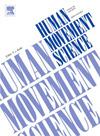任务困难促进了策略学习,但抑制了自主性和认知努力的积极学习效果
IF 1.9
3区 心理学
Q4 NEUROSCIENCES
引用次数: 0
摘要
据报道,提供任务相关自主权的学习条件,以及那些通过操纵困难来鼓励认知努力的学习条件,可以提高技能发展。然而,研究尚未直接比较这两种操作,以确定它们对增强运动学习的相对贡献。本研究采用屏幕目标拦截任务来比较自主组(自我选择球拍尺寸)、挑战点组(根据成绩决定球拍尺寸)、负重组和固定球拍尺寸对照组。在习得、即时、24小时、7天和30天保留和转移测试的多个时间点记录任务准确性和内在动机和认知努力的自我报告测量。结果表明,任务准确性在习得过程中有所提高,并在所有记忆测试中保持稳健,但组间没有差异。内在动机水平在习得过程中有所下降,但组间无差异。所有组的参与者(83人,平均年龄40(±12)岁,50%为男性)都报告了一致的高认知努力得分,并做出了战术学习选择,这表明高任务难度可能抑制了自主性和绩效偶然练习的更微妙的影响。结论是关于个体方法的可变性,以一个新的任务和需要建立实验,可以检测这些特质。本文章由计算机程序翻译,如有差异,请以英文原文为准。
Task difficulty promotes tactical learning but supresses the positive learning effects of autonomy and cognitive effort
Learning conditions that provide task-relevant autonomy, and those that encourage cognitive effort through manipulations of difficulty, have been reported to enhance skill development. However, research is yet to directly compare these two manipulations to establish their relative contribution to enhancing motor learning. This study used an on-screen target interception task to compare an autonomous group (self-selection of racquet size), a Challenge Point group (performance-contingent racquet size), a yoked group, and a fixed racquet size control group. Task accuracy and self-report measures of intrinsic motivation and cognitive effort were recorded at multiple time points across acquisition and at immediate, 24-h, seven-day, and 30-day retention and transfer tests. Results showed that task accuracy improved over acquisition, and remained robust across all retention tests, but no between group differences were seen. Intrinsic motivation levels decreased over acquisition, but with no between group differences observed. Participants (83, mean age 40(±12) years, 50 % male) within all groups reported consistently high cognitive effort scores, and made tactical learning choices, suggesting that high task difficulty may have suppressed the more subtle effects of autonomy and performance contingent practice. Conclusions are made regarding the variability of individual approaches to a novel task and the need to build experiments that can detect these idiosyncrasies.
求助全文
通过发布文献求助,成功后即可免费获取论文全文。
去求助
来源期刊

Human Movement Science
医学-神经科学
CiteScore
3.80
自引率
4.80%
发文量
89
审稿时长
42 days
期刊介绍:
Human Movement Science provides a medium for publishing disciplinary and multidisciplinary studies on human movement. It brings together psychological, biomechanical and neurophysiological research on the control, organization and learning of human movement, including the perceptual support of movement. The overarching goal of the journal is to publish articles that help advance theoretical understanding of the control and organization of human movement, as well as changes therein as a function of development, learning and rehabilitation. The nature of the research reported may vary from fundamental theoretical or empirical studies to more applied studies in the fields of, for example, sport, dance and rehabilitation with the proviso that all studies have a distinct theoretical bearing. Also, reviews and meta-studies advancing the understanding of human movement are welcome.
These aims and scope imply that purely descriptive studies are not acceptable, while methodological articles are only acceptable if the methodology in question opens up new vistas in understanding the control and organization of human movement. The same holds for articles on exercise physiology, which in general are not supported, unless they speak to the control and organization of human movement. In general, it is required that the theoretical message of articles published in Human Movement Science is, to a certain extent, innovative and not dismissible as just "more of the same."
 求助内容:
求助内容: 应助结果提醒方式:
应助结果提醒方式:


